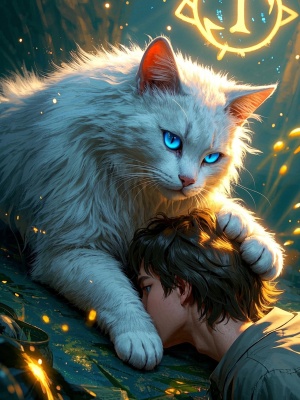The Art of Cat Portrait Photography: Capturing Feline Personality in Every Frame
Introduction: The Allure of Cat Portraits
Cat portrait photography has emerged as a beloved niche in pet photography, combining artistic vision with the challenge of capturing feline personalities. Unlike traditional pet photography, cat portraits require specialized techniques to highlight their unique expressions, elegant postures, and mysterious charm. Whether you're a professional photographer or a cat lover looking to improve your skills, mastering cat portrait photography can create stunning keepsakes that celebrate your feline companion's individuality.
Essential Equipment for Cat Portrait Photography
Choosing the Right Camera and Lenses
For professional-quality cat portraits, a DSLR or mirrorless camera with fast autofocus is ideal. Prime lenses between 50-85mm work exceptionally well for cat portraits, allowing you to capture sharp details while maintaining a comfortable distance. Many photographers recommend the 85mm f/1.8 lens for its beautiful bokeh effect that makes cats stand out against softly blurred backgrounds.
Lighting Solutions for Feline Subjects
Natural light often produces the most flattering cat portraits, but when shooting indoors, consider these lighting options:
- Softbox lights to create diffused, even illumination
- Ring lights for catchlights in the cat's eyes
- Reflectors to bounce light and reduce shadows
Techniques for Capturing Perfect Cat Portraits
Understanding Feline Behavior
Successful cat portrait photography begins with understanding cat behavior. Unlike dogs, cats are less likely to respond to commands, so patience is key. The Pet Photography Association recommends these approaches:
- Allow the cat to explore the shooting area first
- Use quiet, subtle movements to avoid startling the subject
- Have treats and toys ready, but use them sparingly
Composition and Angles
Experiment with different perspectives to create dynamic cat portraits:

- Eye-level shots for intimate, engaging portraits
- High angles to emphasize the cat's elegant posture
- Close-ups of distinctive facial features and whiskers
Post-Processing for Stunning Results
Professional cat portrait photographers often use editing software to enhance their images while maintaining natural appearances. Key editing considerations include:
- Subtle sharpening of eyes and whiskers
- Gentle fur texture enhancement
- Color correction to match the cat's true coat colors
For those interested in creative transformations, AI-powered portrait editing tools can convert cat photos into artistic masterpieces while preserving their unique personalities.
Common Challenges and Solutions
Cat portrait photography presents unique obstacles that require creative solutions:
| Problem | Solution |
|---|---|
| Blinking or looking away | Use continuous shooting mode and gentle sounds to maintain attention |
| Low-light environments | Increase ISO carefully and use fast lenses |
| Unwanted background elements | Use wide apertures to blur backgrounds or employ AI background removal |
Conclusion: The Rewards of Cat Portrait Photography
Mastering cat portrait photography is a rewarding pursuit that combines technical skill with an understanding of feline nature. Whether you're creating professional portraits or capturing precious moments with your own pet, the techniques discussed can help you produce images that truly reflect a cat's unique personality. For more inspiration, visit our gallery featuring exceptional examples of feline portrait photography.
Remember that patience and practice are just as important as technical knowledge when photographing cats. Each session offers new opportunities to capture the elegance, playfulness, and mystery that make cats such fascinating subjects. With the right approach, you can create cat portraits that become cherished artworks for years to come.